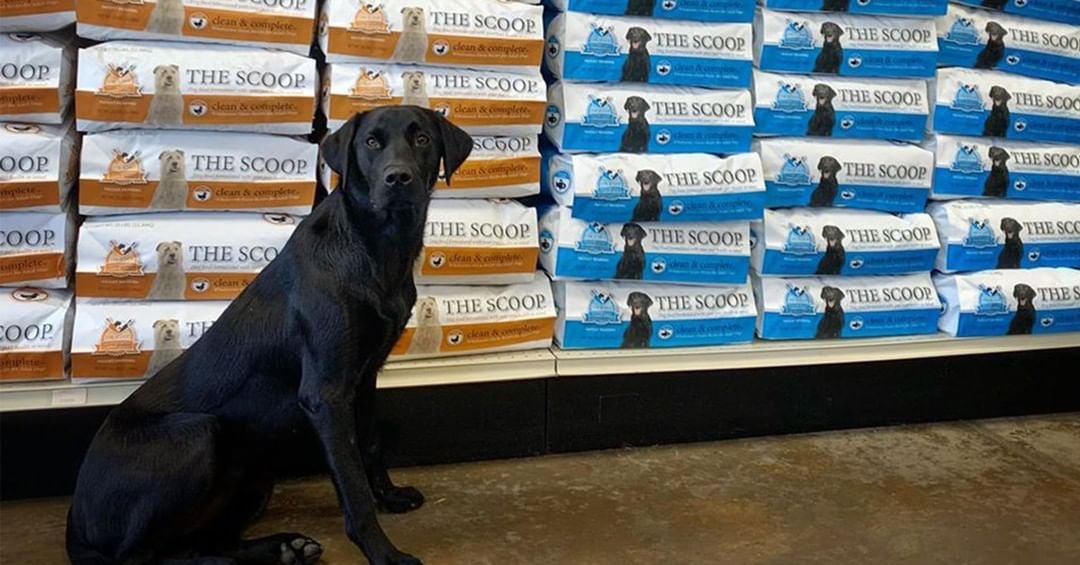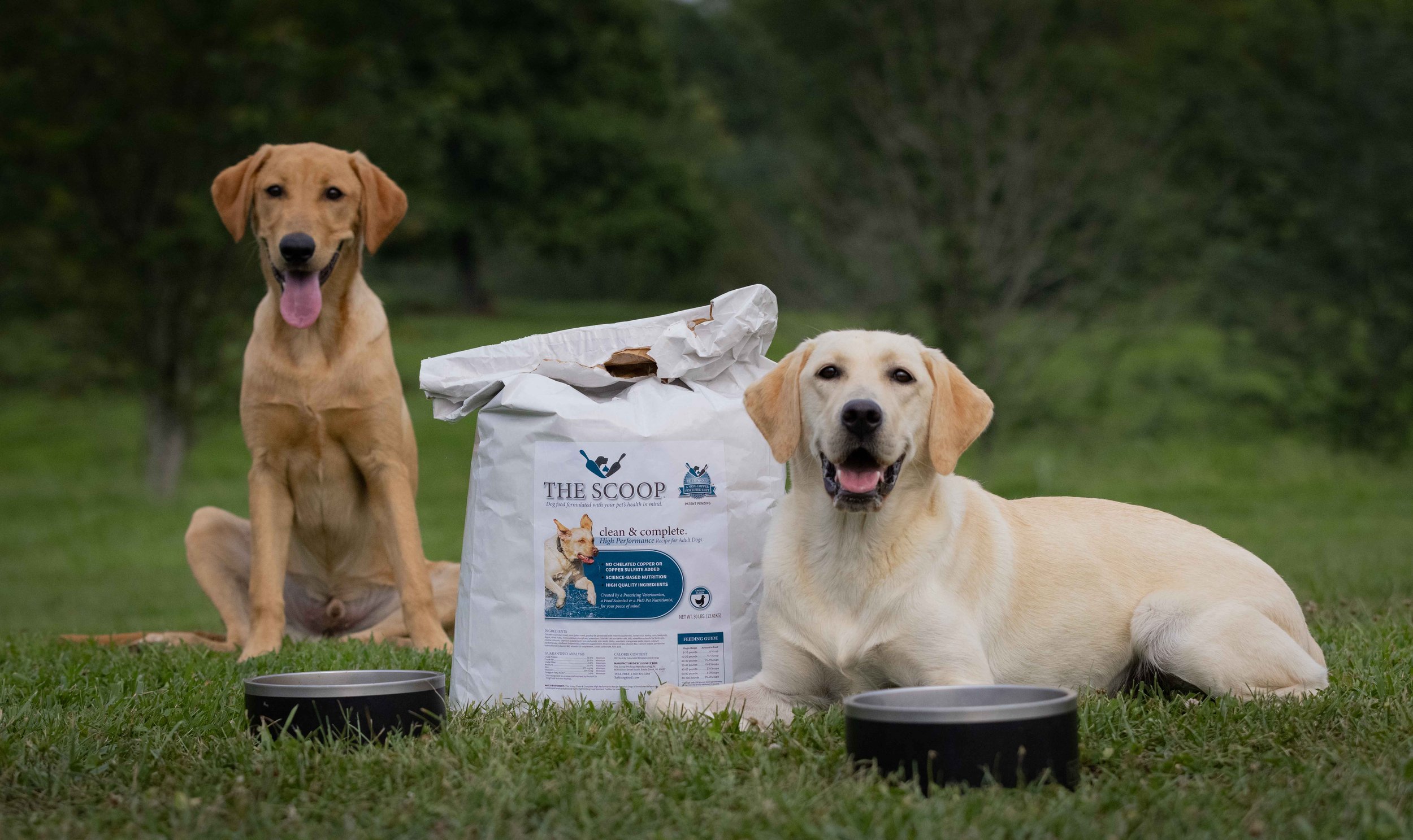The Inside Scoop
Brenden Gallagher for SPLIT REED
Cover Photo: The Scoop / Cade Trickey
For decades people have debated what the right diet and nutrition looks like for dogs. In most people's minds, they may envision our own food pyramid with a mix of vegetables, meats, grains, and dairy that round out a balanced diet not only for ourselves but for our pets too. However when it comes to our dog's nutrition there are a few key differences that not only we should make, as their providers, but that regulatory agencies and manufactures should be made to ensure the health and longevity of our companions.
What is The Scoop?
The Scoop Dog Food is a complete and balanced diet that contains all the necessary ingredients to keep your pet happy and healthy. The Scoop was brought about as a solution to a problem known as Copper Storage Disease (CSD). It all started when Dr. VanVranken, a veterinarian, and devout dog owner adopted a dog named Cookie, who instantly became part of the family. When Cookie started to show symptoms of illness Dr. VanVranker had her checked out by fellow veterinarians. After blood work and a liver biopsy, it was determined that Cookie had cirrhosis of the liver caused by CSD. Sadly Cookie passed away at the age of six. It was the loss of Cookie that sparked further research and questions regarding CSD and thus the Scoop Dog Food was born, to make dog owners not only aware of the issues but to help solve the problem.
The Issue at Hand
The Scoop, as previously mentioned, was created out of the necessity to solve an issue that had long been overlooked by most of the major manufacturers of dog food, Copper Storage Disease. CSD is a condition caused by an abnormal accumulation of chelated copper in a dog’s liver, it can cause damage and scarring and if persistent can lead to death. Since the 1990s there has been an increased prevalence of Copper related illness and disease which has to do with the type of copper and the regulations surrounding copper concentrations in dog food. This issue started with the promotion of chelated coppers (copper sulfate and copper protonate) in animal feed which was originally used in the 1980s as a method to fatten pigs faster for market; these chelated coppers cut the growth period for pigs from 1 year down to six months. Copper sulfate and copper protonate are also widely used to kill pond algae, prevent foot rot in cattle, and used to clean septic tanks. So why are these chemicals in your dog food? The Association of American Feed Control Officials (AAFCO) made changes across the board for copper in animal feed and in turn, required a minimum of 7.1 ppm of copper in adult diet dog foods and 12 ppm in puppy food. Dog food companies wishing to meet this standard and achieve AAFCO certification utilized these chelated coppers as a fast and cheap way to meet copper levels in their foods and what's more concerning is that AAFCO has no maximum on the amount of copper added. The Scoop meets this minimum from natural coppers in their ingredients and is also grain inclusive which helps prevent Dilated Cardiomyopathy. Many studies like the one from Michigan State University – College of Veterinary Medicine, have confirmed the correlation between the increase in CSD can be directly related to the changes in copper supplementation that AAFCO put into effect for dog food manufacturers. The decision to change the type of copper added to food from copper oxide to a chelated copper or copper sulfate has increased the copper exposure in many dog foods to alarmingly toxic levels.
While chelated coppers and CSD are a real issue, not all breeds or individual dogs are affected the same way. Does this excuse the unhealthy levels of possibly toxic copper in your pet’s food? Hell no but let’s get some facts straight. One of the most popular breeds of dogs and certainly one of the most popular breeds of waterfowl hunting dogs are the Labrador Retriever. Labs are also one of the breeds that are more commonly predisposed to CSD. One of the issues with CSD is that it can be hard to diagnose for veterinarians. A blood test called an ALT test can help indicate whether or not your dog is having liver issues but only a liver biopsy will say with the most certainty that your dog is suffering from CSD. Liver biopsies can cost upwards of $1000, for some of us there is no dollar amount too high when it comes to our pet’s health but for others, this could be a real financial burden. So what should you do?
The easiest way to take control of your pet’s health and nutrition before it gets out of hand is to know what's in your dog's food. If you take a look at the back of your dog food bag it should tell you whether or not copper sulfate and copper protonate are ingredients. Since you're back there looking, what else is included in your pet’s food? What are the main sources of protein, fats, and grains? It's worth mentioning that there are a host of misconceptions about the Ingredients that go into dog food, while I’d love to debunk these myself, the team at The Scoop has assembled an extensive list about the Myths and Facts of what is and isn't in your pets food and what certain ingredients really mean.
Which Scoop diet is right for my dog?
The Scoop offers three varieties of dog food, two versions of their Wholesome blend (Farm Chicken or Ocean Pollock) as well as a High-Performance Chicken (30% protein-20% fat). Which diet is right for your dog? Well, what it comes down to is how active your dog is. There is nothing wrong with having a house dog but the truth is if they aren't getting consistent high levels of activity their diet is going to be less intensive compared to a working dog. However when we think of a “working” dog what does that actually look like? Molly Vanvranken from the Scoop Dog Food thinks there should be some discrepancy from owners when they think about this title, “ I feel like there's a big misconception between finding a good nutritional diet for a dog that is a working dog versus dogs that maybe just get taken out on the weekends. We’ve had people buy our performance diet solely based on the fact that it says performance but they never work the dog. It’s one of those things where every single dog is different but I would choose the diet for the dog based on how much you're actually working the dog. A good example of this is my mother’s dog who I worked with this season. He has a ton of extra nervous energy so he does need a performance diet while he’s working. In contrast to that, my lab, who is more laid back, had 1500 retrieves this year and I didn’t put her on the performance diet until the last month of the season. She’s just the type of dog who if she looks at the food she gains weight! I tend to recommend our performance diet for upland GSPs, guide dogs that work all season, and dogs with a lot of nervous energy that struggles to keep on weight. What I tell a lot of our customers is to give them that 30/20 performance diet if they need it, if they're working a lot or have that nervous energy, but in the offseason dogs are gonna tire faster because it's hot out, especially black labs because they can overheat really easily and with that offseason maybe the dogs staying home a little more. That's when I’d recommend our wholesome diet”.
What about puppies? Well AAFCO requires 12 ppm of copper in dog food which is a work in progress for the team at the Scoop because it's harder to maintain those levels naturally. However, in the meantime, Molly and the team at the Scoop recommend switching your puppy over at around 5-6 months of age. Even early on in a dog's life, the chelated coppers in many mainstream puppy foods can be an issue as Molly explained with her dog Sage. “Sage was on run-of-the-mill puppy food up until 9-10 months old. I decided to help take part in a copper study with Sage and after the biopsy, they told me that Sage’s copper levels were about 480 ppm and that I needed to switch to a prophylactic therapeutic diet or Sage could die in the next 5-6 years from CSD. After the switch to the Scoop Sage got a re-biopsy (when Sage was about 2) and her copper levels were down to 240 ppm”. There is no time like the present to make a change and support your dog's health and nutrition, even at a young age chelated coppers in your pet’s food could be putting your pet on a shorter timeline.
If you're looking for food for an active guide dog or just your average house dog I urge you to take a visit to The Scoop Dog Food’s website and consider making the switch. High in palatability, nutrition, and chelated copper-free, the Scoop is the only dog food for those of us looking to keep our dogs happy and healthy long term.



